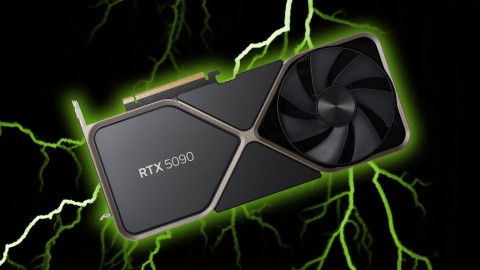NVIDIA RTX 5090 vs. RTX 4080
NVIDIA's GeForce RTX 5090 is generating massive excitement as the next big leap in GPU technology. But how does it compare to the already impressive RTX 4080? Whether you're a gamer, creator, or tech enthusiast, deciding between these two GPUs can be tricky. In this post, we'll break down the key differences to help you make an informed decision.
1. Architecture: Blackwell vs. Ada Lovelace
The RTX 4080 is built on NVIDIA's Ada Lovelace architecture, which introduced significant improvements in ray tracing and AI-powered DLSS 3.0. However, the RTX 5090 will reportedly debut NVIDIA's next-gen Blackwell architecture, offering:
- Improved power efficiency.
- Enhanced ray tracing performance.
- Faster tensor core processing for AI workloads.
If Blackwell delivers as promised, the RTX 5090 will significantly outperform the RTX 4080 in every metric.
2. Performance: Numbers Speak
While official benchmarks for the RTX 5090 are yet to be released, here's how it's shaping up compared to the RTX 4080:
| Feature | RTX 5090 (Rumored) | RTX 4080 |
| CUDA Cores | ~24,000 | 9,728 |
| Base/Boost Clock | ~3.0 GHz | 2.5 GHz (Boost) |
| VRAM | 32GB GDDR7 (Rumored) | 16GB GDDR6X |
| Memory Bandwidth | ~1.5TB/s | 716.8GB/s |
| Ray Tracing Cores | Next-gen (4th gen) | 3rd gen |
| DLSS Version | DLSS 4.0 | DLSS 3.0 |
Verdict: The RTX 5090 is set to offer nearly double the CUDA cores, faster VRAM, and significantly higher memory bandwidth, making it a performance beast compared to the RTX 4080.
3. Gaming: 4K, 8K, and BeyondThe RTX 4080 already delivers exceptional 4K gaming performance, running most modern titles at high settings with ease. However, the RTX 5090 is expected to push boundaries even further:
- 8K gaming at playable frame rates may become mainstream with the RTX 5090.
- DLSS 4.0 is rumored to provide better frame generation and smoother gameplay compared to DLSS 3.0.
For gamers looking for future-proofing, the RTX 5090 will likely remain relevant for years to come, while the RTX 4080 may face limitations as newer, more demanding games emerge.
4. Content Creation and AI WorkloadsFor creators, the RTX 4080 is already a fantastic choice with its:
- Strong rendering capabilities in tools like Blender and Unreal Engine.
- AI acceleration for video editing, upscaling, and more.
The RTX 5090, however, promises to dominate this space with:
- Twice the VRAM, ideal for handling larger textures and datasets.
- Faster AI performance for machine learning, generative AI, and 3D rendering.
If your workflow involves heavy multitasking or AI-driven applications, the RTX 5090 is a no-brainer.
5. Power Efficiency and Thermal PerformanceThe RTX 4080 is known for its relatively efficient power consumption compared to its 4090 counterpart. However, the RTX 5090 is rumored to push the TDP to 600W or higher, meaning:
- A powerful PSU (1000W+ recommended) will be required.
- Better cooling solutions (likely triple-fan or liquid cooling) will be necessary to manage the heat.
While the RTX 5090's performance gains are substantial, its power requirements might be a dealbreaker for some.
RTX 4080:
- You want a high-performance GPU for 4K gaming and content creation.
- You're working within a budget and don't need the absolute best.
- Power consumption and cooling limitations are a concern.
RTX 5090:
- You demand cutting-edge performance for gaming, AI, and creative workloads.
- You're looking for long-term future-proofing and are willing to invest.
- You have the hardware (PSU, cooling, and case space) to support it.
The NVIDIA RTX 5090 promises to be a game-changer, delivering a massive leap over the RTX 4080 in performance, memory, and features. However, it comes at a premium price and with higher power demands.
If you're chasing the best performance money can buy, the RTX 5090 is the clear choice. But if you're looking for value without compromising too much, the RTX 4080 remains a fantastic option.
Which GPU are you leaning toward? Let us know your thoughts in the comments!
Would you like to add anything specific, like more gaming benchmarks or creative workflow examples?



Comments